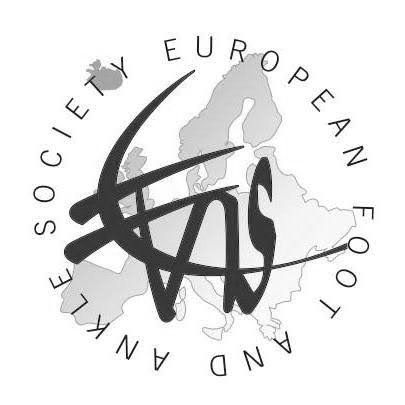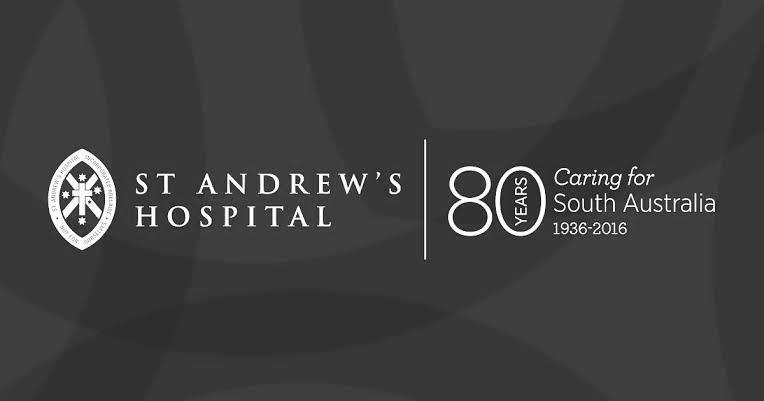General Information about Surgery
Your Surgery Journey
Preparation for surgery
When surgery is offered you need to consider if you have:
- enough time for recovery
- enough support during your recovery
Dr Beamond will clearly describe the recovery process before
surgery occurs. Written information is provided. People are often surprised how long it takes to fully recover.
Swelling and ache take months to resolve after ankle and foot surgery. This is due to gravity, shoes and activities.
Please arrange mobility aids (crutches, frames, knee walkers, etc) and shower chairs before surgery occurs. Information on what is needed and where it can be obtained is provided when surgery is booked.
Driving
is restricted after both right and left sided surgery. The duration of this varies and will be discussed before
surgery. Please see What are the consequence of surgery? below for more information.
Admission to a Rehabilitation Facility after ankle and foot surgery is not
possible in most cases.
Please ensure you have a healthy diet and stop smoking
(all forms). If your diet is limited, taking multivitamins containing vitamin C and zinc help healing.
Some medications need to be stopped before surgery. Specific information on this will be given when surgery is booked. Do not stop any medications unless advised to.
People with significant medical conditions (heart, lungs, etc) will be seen by their anaesthetist before the day of surgery.
Toe-nail polish should be removed before surgery.
Please complete all hospital paperwork and return it to the hospital
as early as possible. They may also contact you before the day of surgery if you have significant medical conditions.
Day of surgery
The day of an operation is always a little stressful. Having prearranged your companion, hospital bag and X-rays, and transport helps.
The hospital will have already given you advise on what to bring and not bring (valuables) with you.
While Dr Beamond has electronic access to most X-rays and scans, bring any recent films to the hospital.
Please stop eating at least six hours before surgery. Small amounts of water (not coffee, tea, milk, or soft-drink) can be drank up to two hours before surgery.
Do not consume alcohol within 24 hours of surgery.
Do not smoke within two weeks of surgery. Surgery can be a great trigger to quit. Please consider speaking to your GP or pharmacist about this.
You will be checked-in and shown to either your room or the operating area. Nurses will ask you questions, confirm your identity and surgical procedure.
Dr Beamond and your anaesthetist will speak to you before surgery. Dr Beamond will always personally mark the site of surgery with a small arrow.
During surgery
When you come into the operating room the first thing you may notice is how cold it is. This helps reduces infection. You will be kept warm during surgery. Music is often playing in the background.
You will lie down on the cushioned operating table and your identity, allergies and surgical procedure are confirmed again. This is a final safety check.
Surgery can take between 15 minutes and three hours depending on the procedure. Most operations take less than one hour.
Your ankle and foot are pre-cleaned with an antiseptic solution. Another coat is applied just before surgery. This has a pink-red colour (alcoholic chlorhexidine) and keeps working after surgery. It does make the skin and toe nails look pink for several days afterwards.
Sterile drapes are placed. Local anaesthetic is applied to help keep you comfortable after surgery.
After surgery, your skin is cleaned and dressings are carefully applied. If required, a "moon-boot" is fitted by Dr Beamond.
You are transferred to the recovery area then go home (Day Surgery) or to the ward (overnight stay).
After surgery
Recovery from surgery is different to recovery from illness.
Dr Beamond and a physiotherapist will see you every day you are in hospital.
The first two weeks after surgery:
- rest and elevation +/- ice
- appropriate pain relief
- protected or restricted weight bearing if needed
- do not consume large amounts of alcohol
- do not smoke (any form)
Written information specific to you and your operation is provided when you leave the hospital. Please follow this carefully as it will make your recovery as smooth as possible.
The dressing must be left on until the post-operative appointment. You will be shown how to keep it clean and dry.
Moving the knee, ankle and toes after surgery helps keep blood circulating. This reduces the chance of a blood clot (DVT/PE). If at high risk of blood clots, other preventative options will be recommended.
Please contact Dr Beamond if any concerns.
Minor issues (headache, nausea or constipation) can be managed by your GP.
If uncontrolled pain, symptoms of infection (fever, redness, bad swelling) or problems with the dressing, call the Wakefield Orthopaedic Clinic 24 hours a day on 8236 4158 and speak to Dr Beamond.
After the first two weeks:
You will be seen by Dr Beamond for all your post-operative care. How many visits are needed depends on the type of surgery.
People living in rural areas are able to have some of these consultations by telephone (no cost).
What are the Consequences of Surgery?
Consequences
occur in most or all people having foot and ankle surgery. These include:
- pain requiring analgesia in the first two weeks
- mild stiffness and swelling
- scars
- small areas of skin numbness and/or sensitivity
- reduced activities until full healing.
Driving after surgery
is restricted and depends on:
- type of surgery
- side of surgery
- need for a post-op shoe or "moon-boot"
- automatic or manual vehicle.
- People driving commercial vehicles or planes must check requirements with their licencing authority.
- Disabled parking permits are not available in most cases as temporary impairment is unlikely to continue for more than six months.
- Returning to driving is after you can wear a regular shoe and be in control of the vehicle. This means able to at least perform emergency breaking. You should not be taking strong pain relieving medication. When in doubt, please check with your insurance company.
- Examples:
- ankle arthroscopy - 2 weeks
- ankle stabilisation - 2 to 8 weeks
- ankle or foot fusion - 2 to 4 months.
What are the Risks and Complications of Surgery?
Ankle and foot surgery in the 21st Century is safer and more successful than ever. However, there is always a balance between risk and benefit for any procedure or treatment. The following information is a summary of how Dr Beamond (and all surgeons) minimises and manages this risk. You and Dr Beamond are part of a team in reducing these events.
Serious complications following foot and ankle surgery are rare. Dr Beamond will discuss your individual risk with you prior to proceeding to surgery.
Risk can be minimised by pre-operative, operative and post-operative measures, but unfortunately not 100% eliminated. This is the nature of surgical treatment. If the benefits of surgery do not justify the risks of surgery, surgery is not appropriate. Some complications can make you worse off than before surgery.
If you have a specific concern about your planned surgical procedure, please discuss this with Dr Beamond prior to the day of your operation. He will always make time to go over these important issues with you.
This information is not comprehensive, does not discuss anaesthetic or medical complications, and does not replace the informed consent process.
The major surgical complications, and the steps taken to reduce the chance of them happening, include:
Wound problems and infection (1-2%)
- Pre-operative antibiotics are given and repeated skin anti-septic preparation used (your leg and foot/toes will be pink for several days). Good nutrition helps wounds heal. You must stop smoking at least 2 weeks prior to surgery.
- Operative techniques are used that minimise surgical trauma and duration, whilst maximising wound healing.
- Post-operative elevation and rest until wounds are healed (10-14 days in most people) helps reduce swelling, bruising and pain.
Blood clots (DVT/PE/VTE) (1-5%)
- The chance of developing a blood clot (DVT) in one of the leg veins after foot and ankle surgery is low, and the chance of it breaking free and travelling to the lungs (PE) is very low.
- All patients receive protection against blood clots throughout their period of treatment.
- People can be at low or high risk of developing blood clots. Blood clots can occur without trigger or surgery (flying in a plane). The risk of developing one is more determined by factors other than the surgical procedure, but this can be the trigger for developing one. Dr Beamond will assess your individual risk with you prior to surgery.
- People who have had a previous blood clot or a strong family history of blood clots (thrombophilia), or who have active or recently treated cancer are at particularly high risk of developing a blood clot. Other patient factors that increase risk include having a BMI > 30 (obesity), being older than 60 years, having other significant medical conditions (heart, lungs, diabetes, etc) and having varicose veins.
- Surgical conditions and procedures that make you at higher risk of a blood clot are:
- injury to/surgery on the Achilles’ tendon
- hindfoot and ankle fusion or fixation surgery, when associated with prolonged immobilisation and non-weight bearing.
- Those at high risk of blood clots require additional protection (injections or tablets). Of course, the risk of blood clots also needs to be balanced against the risk of bleeding and other complications that are uncommonly associated with taking “blood thinning” medications.
- Pre-operatively, the oral contraceptive should be stopped at least four weeks prior to surgery if possible (it may not be effective anyway due to antibiotics given before surgery).
- During the surgical procedure, the opposite leg will be protected with a compression stocking (TED) and surgery is performed promptly.
- In the post-operative period, the compression stocking will continue with early mobilisation and weight bearing (partial to full in most patients). Hip, knee and ankle movements should be performed every hour. If a removable "moonboot" is worn, it can be removed several times each day for gentle movement exercises.
- In those people at high risk of blood clot, additional medication will be recommended. Unfortunately, aspirin is not adequate in the majority of cases. The two commonly prescribed medications are Enoxaparin (Clexane) injections daily or Rivaroxaban (Xarelto) tablets daily. This needs to continue for the duration of full immobilisation with non-weight bearing (10-30 days). Both medications are effective in reducing the risk of blood clot but have rare side effects which include bleeding. There is also a cost associated with them (slightly higher for Rivaroxaban). Should one of these medications be prescribed, it is very important to read the safety information contained within the packaging that comes with them. Unfortunately, some people still get a blood clot despite all these efforts.
Delayed or poor healing of bone (1-10%)
- Pre-operative improvement of nutrition, and diabetes if needed, helps wounds and bones to heal.
- Operative techniques are used that strongly stabilise bones and joints until healing (plates, screws and staples). Bone graft is used when needed to speed-up healing.
- Post-operative immobilisation and reduced weight-bearing is required until bones are healed (the duration and extent of this varies depending on the procedure and condition).
Severe or prolonged skin and scar sensitivity (CRPS/RSD) (1%)
- Some people are at higher risk of developing severe sensitivity and nerve pain following injury or surgery. They have often had a previous episode.
- Pre-operative assessment and planning is critical. Operative and anaesthetic techniques are used to minimise sensitivity of scars and the surgical area (local anaesthetic blocks and occasionally specific tablets).
- Following surgery, skin and scar massage can commence as soon as wounds have healed (10 to 14 days). Toe movements should begin immediately.
Smoking increases the chance of all of these serious complications and should be stopped a minimum of two weeks prior to surgery and till at least until skin and bone are healed.
Pain Management After Surgery
All people will have some pain after surgery. The amount depends on the person, previous pain experiences, type of surgery and pain relief.
Management of post-operative pain begins before surgery. Adequate planning and support will minimise "stress" after surgery, which helps pain.
At the time of surgery:
- local anaesthetics are used to reduce pain in the first 24 hours. This involves "nerve blocks" at the ankle or knee level
- paracetamol, anti-inflammatories and strong (opioid-type) medications are given as required.
After surgery:
- rest, ice and elevation are important
- regular paracetamol and anti-inflammatories (if able) give background pain relief
- strong (opioid-type) medications are used for severe pain during the first three to seven days.
No-one should expect to be "pain-free" in the first three weeks after surgery. Trying to be using strong medications will lead to side-effects.
Opioid medications
- This group of medications are very effective in reducing severe post-surgical pain.
- Examples are codiene (Panadiene Forte) and oxycodone (Endone). Newer versions are tapentadol (Palexia IR) and tramadol (Tramal).
- Short-term use is safe.
- Side effects can occur, most commonly nausea and constipation. Concentration and judgement can also be affected. They should not be used with alcohol as this will cause sedation. Like all prescribed medications, always read the Patient Information included with the medication.
- Use of these medications after the first ten to fourteen days can lead to tolerance and withdrawal - symptoms of addiction. This is a World-wide issue of great importance. Dr Beamond will not continue to prescribe these medications. They are not appropriate for chronic pain and do not help nerve pain. Other long-term pain management techniques are available through your GP and Pain Specialists.













